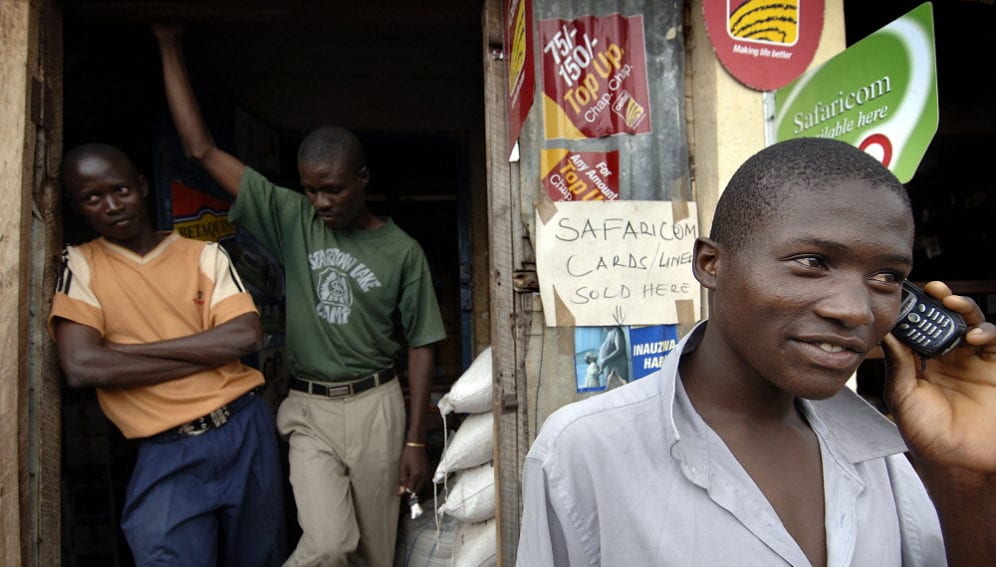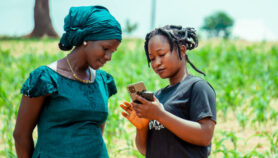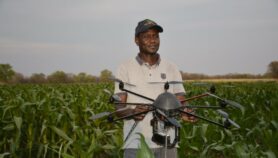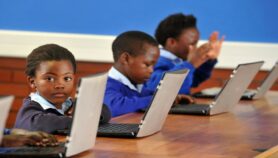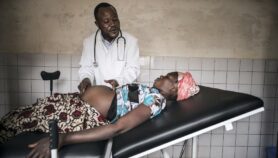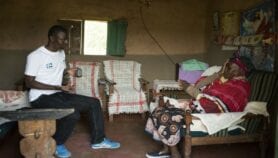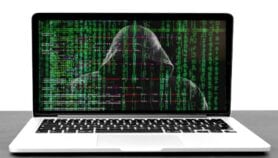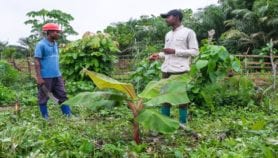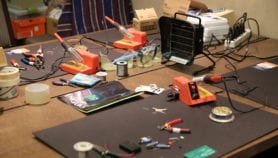Send to a friend
The details you provide on this page will not be used to send unsolicited email, and will not be sold to a 3rd party. See privacy policy.
Call-data records can help plug developing nations' information gap, say Paul van der Boor and Amy Wesolowski.
Each of us generates streams of digital information — a digital 'exhaust trail' that provides real-time information to guide decisions that affect our lives.
For example, Google informs us about traffic by using both its 'My Location' feature on mobile phones and third-party databases to aggregate location data. BBVA, one of Spain's largest banks, analyses transactions such as credit card payments as well as ATM withdrawals to find out when and where peak spending occurs.
This type of data harvest is of great value. But, often, there is so much data that its owners lack the know-how to process it and fail to realise its potential value to policymakers.
Meanwhile, many countries, particularly in the developing world, have a dearth of information. In resource-poor nations, the public sector often lives in an analogue world where piles of paper impede operations and policymakers are hindered by uncertainty about their own strengths and capabilities.
Nonetheless, mobile phones have quickly pervaded the lives of even the poorest: 75 per cent of the world's 5.5 billion mobile subscriptions are in emerging markets. These people are also generating digital trails of anything from their movements to mobile phone top-up patterns.
It may seem that putting this information to use would take vast analytical capacity. But using relatively simple methods, researchers can analyse existing mobile phone data, especially in poor countries, to improve decision-making.
Low-hanging data
Think of existing, available data as low-hanging fruit that we — two graduate students — could analyse in less than a month. This is not a test of data-scientist prowess, but more a way of saying that anyone could do it.
There are three areas that should be 'low-hanging fruit' in terms of their potential to dramatically improve decision-making in information-poor countries: coupling healthcare data with mobile phone data to predict disease outbreaks; using mobile phone money transactions and top-up data to assess economic growth; and predicting travel patterns after a natural disaster using historical movement patterns from mobile phone data to design robust response programmes.
Another possibility is using call-data records to analyse urban movement to identify traffic congestion points. Nationally, this can be used to prioritise infrastructure projects such as road expansion and bridge building.
The information that these analyses could provide would be lifesaving — not just informative or revenue-increasing, like much of this work currently performed in developed countries.
But some work of high social value is being done. For example, different teams of European and US researchers are trying to estimate the links between mobile phone use and regional economic development. They are using various techniques, such as merging night-time satellite imagery from NASA with mobile phone data to create behavioural fingerprints. They have found that this may be a cost-effective way to understand a country's economic activity and, potentially, guide government spending.
Another example is given by researchers (including one of this article's authors) who have analysed call-data records from subscribers in Kenya to understand malaria transmission within the country and design better strategies for its elimination. [1]
In this study, published in Science, the location data of the mobile phones of more than 14 million Kenyan subscribers was combined with national malaria prevalence data. After identifying the sources and sinks of malaria parasites and overlaying these with phone movements, analysis was used to identify likely transmission corridors. UK scientists later used similar methods to create different epidemic scenarios for the Côte d'Ivoire.
Data philanthropy
While these projects may not require advanced techniques, they do require plenty of data to leverage comprehensive, spatially and temporally explicit results across large geographical areas.
Call-data records are mostly owned by mobile network operators — so for analyses to work, operators need to be open to sharing or donating data to scientists. This requires a new movement that the UN's Global Pulse initiative — which is exploring ways to provide more timely data and analysis about socioeconomic shocks — calls 'data philanthropy'.
Various firms are already participating in data philanthropy. Following Haiti's 2010 earthquake and subsequent cholera outbreak, telecommunications company Digicel Haiti released call-data records to allow researchers to track people's movements between the centre of the cholera outbreak and the nation's capital, Port-au-Prince. [2]
And as part of its Data 4 Development challenge, telecoms firm Orange released anonymised call data from its Côte d'Ivoire subsidiary for research teams to explore the data's social value. [3]
This initiative not only shared data — it also made an open call for research proposals on what to do with it, crowdsourcing questions and their solutions. This could be a new model: those with the data should tap into online communities of data analysis, such as Kaggle.com, to crowdsource the answers to questions of interest not only to the mobile phone operators, but also to policymakers and development agencies.
It is important to recognise that the research community has yet to fully address issues of data privacy and methods of handling anonymised data. Agreements are needed between researchers and companies to ensure that the data provided is free from personal identifiers — especially in light of the recent intelligence leaks from the National Security Agency.
Nevertheless, there is a clear case for public and private sector data sharing that can glean insights into human behaviour for public policy. If the data scientists who can do the analysis, the governments who benefit from it and the mobile network operators who own the data can be brought together, there is much to be gained from access to existing sources of mobile phone data.
Paul van der Boor and Amy Wesolowski are PhD students in the Engineering and Public Policy department at Carnegie Mellon University, United States. Paul is researching the evolution of mobile money in emerging markets and is also a social entrepreneur, having co-founded e-Luma (www.e-luma.org). Amy has been working on analysing the impact of mobility on malaria transmission in Kenya.
References
[1] Science doi: 10.1126/science.1223467 (2012)
[2] PLOS Medicine doi: 10.1371/journal.pmed.1001083 (2011)
[3] Orange D4D Challenge (D4D Challenge, retrieved 12 June 2013)


